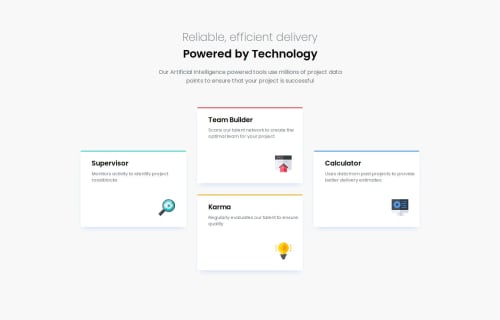Four Card Feature Section

Solution retrospective
This was my first challenge that consisted of more than just a centered element with some different objects in it. I am glad I got through it and was able to make it work!
What challenges did you encounter, and how did you overcome them?Getting the cards to be in the diamond like pattern took a bit of time to figure out. I wasn't exactly sure how to get stuff out of alignment using flex at the onset of the challenge. But I was able to do a bit more research into flex versus grid and determine flex was good to use for these as it I needed columns mostly.
What specific areas of your project would you like help with?I am starting to see the need for and reasoning behind having more than one mobile design with media queries. Any tips on multiple breakpoints and making the page more responsive to different dimensions would be appreciated.
Please log in to post a comment
Log in with GitHubCommunity feedback
No feedback yet. Be the first to give feedback on sttilstra's solution.
Join our Discord community
Join thousands of Frontend Mentor community members taking the challenges, sharing resources, helping each other, and chatting about all things front-end!
Join our Discord